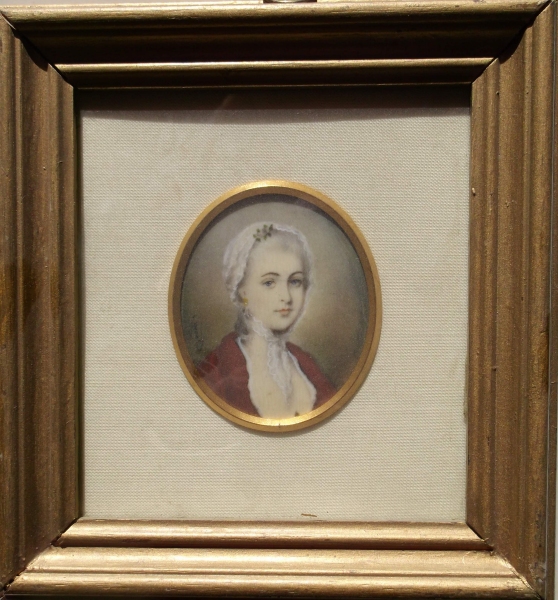

portrait of a Biedermeier lady
left-hand side part of a double portrait
together with portrait 312
The identity of this lady is unknown, if she ever existed.
She is presented to us as an example of a Biedermeier lady.
The Biedermeier period refers to an era in Central Europe between 1815 and 1848 during which the middle-class grew and arts appealed to common sensibilities.
It began with the time of the Congress of Vienna at the end of the Napoleonic Wars, and ended with the onset of the European revolutions in 1848.
Although the term itself is a historical reference, it is predominantly used to denote the artistic styles that flourished in the fields of literature, music, the visual arts and interior design.
The Biedermeier period does not refer to the era of time as a whole, but to a particular mood and set of trends that grew out of the unique underpinnings of the time in central Europe.
There were two driving forces for the development of the period. The first was the growing urbanization and industrialization leading to a new urban middle class, which created a new kind of audience for the arts.
The second was the political stability prevalent under Clemens Wenzel von Metternich following the end of the Napoleonic Wars.
The effect was for artists and society in general to concentrate on the domestic and (at least in public) the non-political.
Writers, painters, and musicians began to stay in safer territory, and the emphasis on home life for the growing middle-class meant a blossoming of furniture design and interior decorating.
Austrian painting during this era is characterized by the commitment to portray a sentimental and pious view of the world in a realistic way. Biedemeier themes reinforced feelings of security, Gemütlichkeit, traditional pieties and simplicity, eschewing political and social commentary during the epoch.
Thus, the techniques, while classic in nature were of the utmost importance to reach a realistic rendering.
Regarding the thematic, the technique was seen not only as a narrative medium to tell the past in anecdotal vignettes, but also to represent the present. This formed an aesthetic unity most evidenced in the portraits.
painting: waterbased on an ivory chip
not signed, but made by a great master
numerous very fine details
preservation: excellent
one of the better portraits in this collection
frame: recent wooden frame
copper suspension eyelet
flat glass, metal ring
frame in superb state
internal dimension ring: vertical 56 mm.
thicknes frame: 20mm
vertical dimension frame: 161 mm




stock number 310

